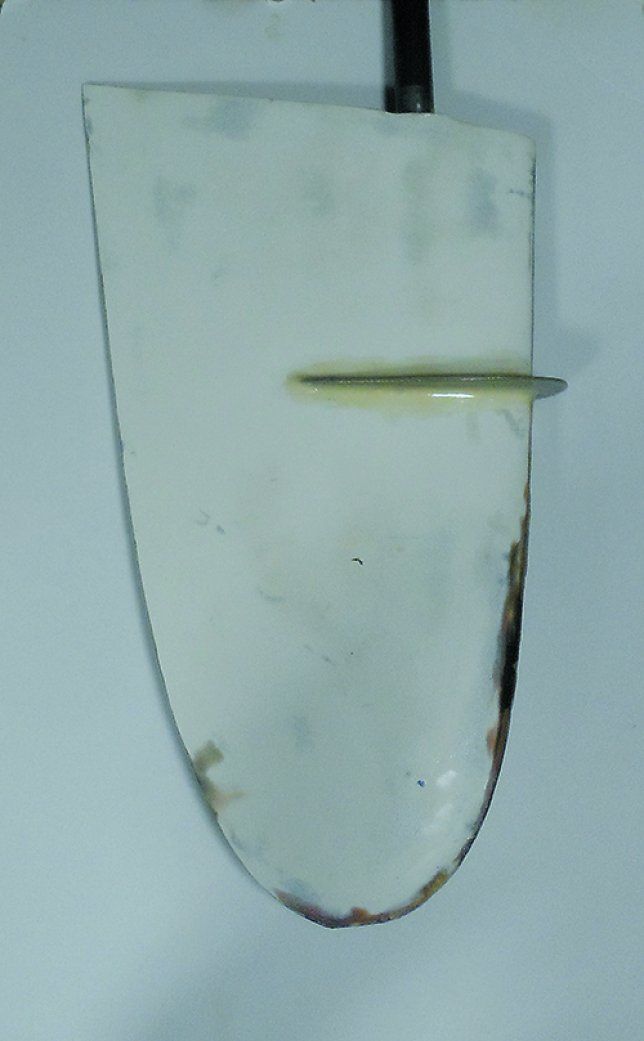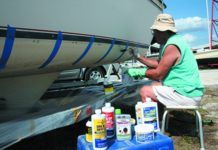Got a really fast boat? Zipping along at over 10 knots there are any number of ways air can suck down the windward side of the blade, spoiling the coanda effect. When planing there are often some air bubbles under boat. If the boat assumes a bow-down attitude under the pressure of the spinnaker or as waves pass, the transom can come a few inches out of the water. Above 15 knots theres enough suction to pull air right down the rudder tube. This air quickly spreads out to cover the entire low pressure side of the rudder, reducing lift by almost half in an instant. Sometimes there is a quiet whoop sound and often a rooster tail suddenly sprouts several feet in the air. This is called ventilation and is distinct from stalling, which happens at lower speeds.
The solution?
The new generation of high-performance rudders don’t have this problem. They have deep, high aspect ratio rudders that are virtually immune to ventilation.
However, this doesn’t help you with the boat you have. Ordinarily, ventilation is only a problem off the wind- thats when we have enough power, the bow-down attitude that encourages ventilation, and the occasional need to bear off forcefully in the gusts. Better helmsmanship helps; we can reduce the rudder angle and force by steering preemptively, before the load builds up. Keeping the rudder finish smooth and minimizing the gap also help. But when these steps fail, a fence always works.
Anti-ventilation fence
When the rudder loses its grip, the rudder angle must be quickly reduced until the flow reattaches. A considerable loss in steering power result during the upset.
Just above the propeller of every outboard is an anti-cavitation plate. More properly, it should be called an anti-ventilation plate, since its purpose is to prevent the propeller from sucking down air from above. The same thing works on a rudder. Although there are many rules of thumb, it basically needs to run a few inches under the water, after allowing for any distance the transom might rise above the water.
A reasonable location is at least 12 inches below the hull and least 16 inches above the tip of the rudder. It should extend outwards about 2/3 the thickness of the rudder section, and extend from in front of the rudder to about half way back. It should run parallel to the water or be angled upwards just a few degrees to encourage upwards flow along the foil, but must never be angled downwards.
The plate is typically made from ?-inch to -inch precast fiberglass and is bonded in place with a thickened epoxy filet top and bottom.
The only real disadvantages of a rudder fence are that they can catch weeds, prevent dagger-type rudders from being retracted, and swing-up rudders become very inefficient when partially raised. It can also be inefficient in up-and-down conditions if the dimensions are exaggerated.





































